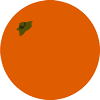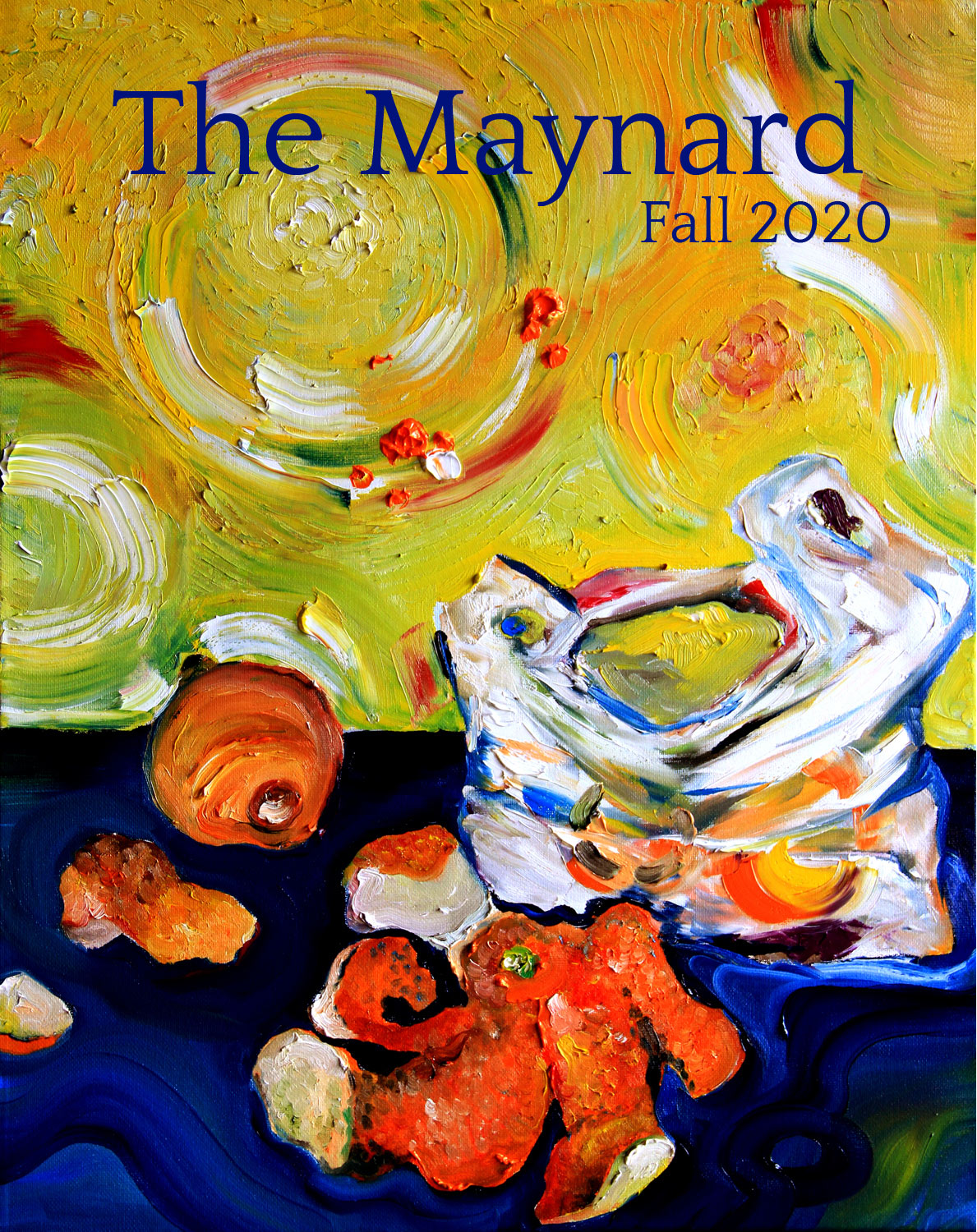fall 2020
Table of Contents
Return to Home PageIntroduction
Okapi Wood Bison Kristi Maxwell
Pattern Recognition![]() Tolu Oloruntoba
Tolu Oloruntoba
In a Dark Field![]() Jesse Sensibar
Jesse Sensibar
Netsuke![]() When We Wake Together in a Lost City
When We Wake Together in a Lost City![]() Iris Jamahl Dunkle
Iris Jamahl Dunkle
The Northern Flicker![]() Identic
Identic![]() Andrew Lafleche
Andrew Lafleche
The Narrow Road to Deep Marriage![]() John Wall Barger
John Wall Barger
Fragments of a World![]() Dayna Patterson
Dayna Patterson
One exists![]() The embroidering light
The embroidering light![]() you learn
you learn![]() J.I. Kleinberg
J.I. Kleinberg
verses upon the burning of our house![]() Amanda Merpaw
Amanda Merpaw
Bracketed![]() A Post-Apocalyptic Nightmare
A Post-Apocalyptic Nightmare![]() Danielle Badra
Danielle Badra
My Father's House![]() A.N. Higgins
A.N. Higgins
Neurons, Metal, Seed![]() Reading Rocks and Mountains
Reading Rocks and Mountains![]() Susan Landgraf
Susan Landgraf
Horses Innocence, Experience![]() Ryan Eavis
Ryan Eavis
from Vanishing Twin Syndrome: VII![]() James Cagney
James Cagney
What We Do When We Run Out of Elephants![]() Shareen K. Murayama
Shareen K. Murayama
Bingo Card for the End Times![]() Milla van der Have
Milla van der Have
Routes on the Red Subarctic Archipelago Tongue Heather Simeney MacLeod
Introduction
Warm autumnal wishes to you, dear reader.
During these strange, uncertain times, one of the things that’s giving meaning to the days for the staff at The Maynard is keeping to our schedule of reading poems and engaging with one another, with the poets who’ve offered us their work, and with our marvelous extended community.
Thanks to these touchstones, connections, and conversations, we’re delighted to welcome you to the Fall 2020 issue of The Maynard!
To produce this issue, the editorial team read over 1500 poems. Arriving at the customary selection of 24 poets—and their 32 poems—was a grand task. Selection and consensus always is. Of course, concession and exclusion are the flipside of the pleasure and discovery that we experience while reading the work under consideration. We’re always on the hunt for poems that excite us, that stretch language, engage form, and that are cast in unabashed, courageous voices. At the same time, we are mindful of building an issue that coheres and instigates conversations—especially about subjects often left out of everyday discourse. We want the conversation we have as we champion poems and build the issue to extend to the spaces between poems and to the far reaches of contemporary poetry. We want our conversation to enliven exchange with you, dear reader.
We think the Fall 2020 poems do this. The issue before you brings to the fore several subjects most crucial to our moment: violence against women, ecological and environmental crises, colonization, identity, change. Fittingly, Sidi Chen’s vibrant, textural, even confrontive oil painting, Still Alive: Four Oranges, resides on the Fall 2020 issue’s cover. In his Artist Statement, Chen “liken[s] the positions and processes of movements in the fast-changing world to the oranges on the table: the pioneer (eaten); the outcasted (rolling off the table); the majority and the follower (inside the bag, starting to mold).”
Among the poems we’ve chosen for the Fall issue, you’ll discover J. I. Kleinberg’s cutup/torn-out poems that foreground language’s materiality, manual process, and visual effects. You’ll find Kristi Maxwell’s lipograms, which use a formal constraint to draw attention to endangered species. Louise Carson’s concise “Soft Poem” highlights the potential within poem titles and embodies the wonder of life, breath, and speech. Tureeda Mikell’s “In the Be” explores the movements of air and sound coming into being. In her “Bracketed,” Danielle Badra explores negotiations of linguistic im/migration—both forced and self-reflexive. Tolu Oloruntoba invites time to rethink itself and our relationship to it in his “Pattern Recognition.” Milla van der Have’s schematic “Bingo Card for the End Times” is a confessional map for the apocalyptic-minded reader. Accompanying van der Have’s poem is a “shuffle” button; click the button for a chance to create your own order of “the End Times.” The poem’s accompanying audio also shuffles according to the new order of text. To expand your experience of the poems in the Fall issue, read the poems out loud. And, press the little speaker in the upper right corner of the page to let the poets read to you!
“Chance” and “shuffle” remind us. Each time you visit this issue (and the issues from 2013 to present) of The Maynard, the order of the poems within the Table of Contents shuffles, rendering a new order of appearance for the poems. Check it out for yourself by visiting once, twice, thrice. Which order meets your sensibilities? Write to us or join us on social media to share your reading-listening-discovering experience.
Whatever your sensibilities, we hope that you enjoy the poems in the Fall 2020 issue of The Maynard. Happy reading and listening!
From our homes to you, we send you our very best wishes for your safety and health,
Nick Hauck, Jami Macarty, & Ram Randhawa, Editors
w/Colleen Webber, Editorial Intern
Fall 2020 issue | The Maynard

